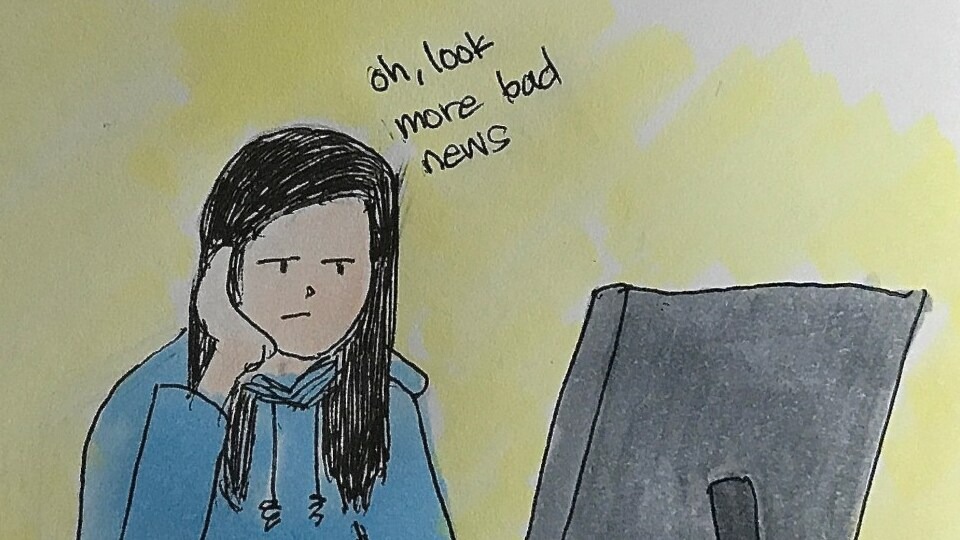Animals See Colours We Can’t Even Imagine

Human beings often assume that we see the world in its full visual richness. We name colours, classify shades, design technologies around visible light and treat our perception as if it is the standard against which other creatures should be measured. Yet scientific research repeatedly shows that the way humans see colour is only one version of reality. It is not superior or more advanced, it is simply suited to our evolutionary needs. Many animals experience a far broader range of colours, patterns, and wavelengths. Their visual world is not an enhanced version of ours but a fundamentally different one, shaped by eye structures, photoreceptor types and evolutionary needs that diverge sharply from our own. The result is that two organisms can look at the same environment and perceive entirely different scenes.
The Illusion of the Human Rainbow
For centuries, humans have been taught that the rainbow contains seven colours: red, orange, yellow, green, blue, indigo and violet. This categorisation originates from a combination of linguistic history and Isaac Newton’s early optical studies. But Newton split the visible light spectrum into seven colors by comparing them to the seven notes in a musical scale, a number that also held symbolic significance in his time. Rainbows are a continuous spectrum of light with no distinct color boundaries, and the number of colors visible is limited only by the human eye's ability to distinguish them.

To humans, the rainbow appears complete because the brain constructs a colour experience from the available input. But if the rainbow were viewed by a species with additional photoreceptor types, it would reveal further layers, patterns and contrasts, including ultraviolet information that remains invisible to us.
The concept of colour is not universal. The colours humans see exist because our biology allows those particular wavelengths to be interpreted as specific experiences. If our eyes had evolved differently, our perception of colour would be unrecognizably different. The human rainbow is therefore not an absolute truth, it is simply an interpretation derived from a limited viewpoint.
How Colour Vision Works
Human colour vision depends on three types of cone photoreceptors, which are sensitive to long, medium and short wavelengths of light. These cones are sufficient for distinguishing millions of shades, yet they cover only a fraction of the electromagnetic spectrum. The brain compares input from these cones to produce the experience of colour. This system is known as trichromatic vision. While effective, it is not exceptional in the animal kingdom. Many species possess four or more cones, and each additional cone type expands the visual range. When an organism has four cones instead of three, the number of potentially distinguishable colours does not merely increase by one-third, it expands dramatically. The brain gains access to an additional dimension of colour information, creating multiple combinations and subtleties. In addition to varying cone types, animals differ in the range of wavelengths their cones can detect. Some species see well into the ultraviolet range, far beyond human capability. Others detect infrared or polarised light. The architecture of their eyes and the neurological pathways behind them transform these wavelengths into usable visual information. The gap between human and non-human colour perception is therefore not merely quantitative, it is also qualitative. We do not just see fewer colours, we lack the neural capacity to even imagine what certain colour combinations look like.
Animals That See Ultraviolet
Ultraviolet (UV) light sits just beyond the violet end of the human visible spectrum. Our eyes cannot detect it, yet it plays an important role in the visual experience of many animals. For birds, their feathers often contain UV-reflective patterns that are invisible to humans. The patterns influence mating behaviour, territorial displays and species recognition. Bees depend on ultraviolet cues for foraging, as many flowers possess UV-reflective patterns that serve as directional guides, pointing insects toward nectar sources. The patterns function as landing strips, highlighting food in ways that human eyes cannot perceive. This indicates that UV vision is not a minor enhancement but a critical component of survival.
Animals With Extraordinary Colour Vision
Some species possess visual systems so advanced that they challenge our understanding of what vision can be. Their photoreceptors, neural processing and light-detection mechanisms create colour experiences vastly beyond human capabilities.
Goldfish represent an example of an unexpectedly advanced system. They are tetrachromatic, and have one cone that is sensitive to ultraviolet wavelengths. Goldfish can also detect polarised light, which helps them orient and find food in murky or reflective waters. The mantis shrimp stands at the extreme end of the spectrum. With sixteen photoreceptor types, it possesses the most complex known visual system in the animal kingdom. In addition to detecting ultraviolet light, mantis shrimp perceive both linear and circular polarisation. These abilities allow them to communicate through complex signals, navigate coral reefs with precision and detect prey that would be invisible to other animals. Scientists attempting to simulate mantis shrimp colour perception struggle because the animal’s visual processing does not map neatly onto human models.

Colours Humans Cannot Imagine
The easiest mistake in trying to understand animal colour perception is assuming that non-human colours resemble more intense versions of familiar ones. This is incorrect. When animals possess additional cone types, they do not simply see additional shades of red or blue. They perceive colours that have no equivalent in the human visible spectrum. These colours cannot be imagined because the human brain lacks the architecture to represent them.
Rare humans with a fourth cone type, known as tetrachromats, provide limited insight into this phenomenon. Some women with a genetic variation on the X chromosome possess four functioning cone types. These individuals often report seeing variations in colour that others cannot distinguish, such as subtle differences within what most people would consider the same shade. Even so, tetrachromatic humans remain limited by the rest of their neural structure. Their visual experience is expanded compared to the average person, but it does not approach the complexity seen in many animals.
How Different Colour Worlds Shape Animal Behaviour
Vision is intimately tied to behaviour. Different colour capabilities allow species to navigate their environments and meet survival challenges in specific ways. In many birds and fish, colour plays a central role in communication. Ultraviolet patches and subtle contrasts signal reproductive readiness, dominance or territorial boundaries.
Camouflage and navigation also depend on visual cues. Migratory birds use a combination of ultraviolet patterns in the sky and magnetic field perception to orient themselves across continents. Visual differences influence how species behave and interact with their environment.
The Limits of Human Perception
Despite technological progress, humans remain constrained by the biology of their eyes and brains. Cameras can detect ultraviolet light, and software can simulate how animals might perceive their environments, but these tools only provide indirect representations. They translate light outside the human visible spectrum into colours we can see, which inherently distorts the original information. Even when given data from UV-sensitive cameras, humans still view that information mapped onto their limited colour channels.
This is similar to the challenge of explaining sound to someone born completely deaf. The person may understand vibration, frequency and amplitude intellectually, yet the sensory experience of sound remains inaccessible. In the same way, humans can study the ultraviolet and polarized worlds of animals, but we cannot perceive them directly. Human vision is not a neutral window into reality. It is a filtered, biologically constrained interpretation.
The Hidden Worlds All Around Us
Colour is a biological construction, not an inherent property of objects. Many animals operate with visual systems that interpret light in ways fundamentally different from human perception. The implication is that the human perspective, while meaningful to our species, represents only one version of reality. Other species inhabit visual environments layered with different categories of sensory data.
Recognising the diversity of visual systems across the animal kingdom deepens our understanding of biology and evolution. It reminds us that perception is shaped by ecological demands, that species evolve to sense the information most critical to their survival, and that the world is filled with signals we cannot detect.
You may also like...
CLOUDFLARE TECH GLITCH: ARE WE LIVING INSIDE A DIGITAL TIME BOMB?

A global outage caused by a major Cloudflare glitch briefly crippled access to various websites and top platforms like X...
The Chemistry of Emotions: Why You Feel What You Feel

Your emotions aren’t random, they’re chemistry in motion. Every heartbeat, every rush, every moment you feel deeply is p...
Affordable Chinese Cars Are Reshaping Africa's Auto Market

Brands such as Chery, Omoda, BYD, GWM, Haval, JAC, Geely, and FAW have entered the African markets and they arrived with...
Are Nigerians Becoming Desensitized to Bad News? Inside the 2025 Wave of National Fatigue

Amid kidnappings, violence, and international tension, many Nigerians are showing signs of news fatigue. Explore the rea...
“God When” Used to Be Cute, Now, It’s a Cry for Help

God when’ used to be a playful caption, but today it reflects the silent pressure, longing, and emotional fatigue many N...
Africa's New Frontier in Disease Research: Local Scientists Are Making Waves in Global Medicine.

African scientists are teasing out biological patterns the world has missed, constructing treatments shaped by lived exp...
Animals See Colours We Can’t Even Imagine

Humans like to believe we see the world in full colour, that our rainbow is THE rainbow. But our vision is only one narr...
While Everyone Chases AI, Bill Gates Is Buying Farmland — What Does He Know That We Don’t?

Bill Gates’ purchase of 25,000 acres of U.S. farmland raises critical questions about future wealth, food security, and ...
